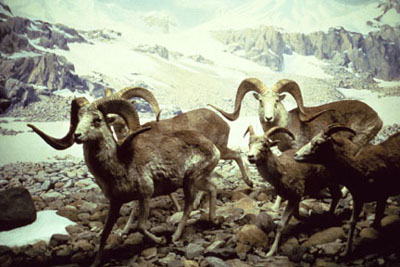

 The Accurate Reloading Forums
The Accurate Reloading Forums  THE ACCURATE RELOADING.COM FORUMS
THE ACCURATE RELOADING.COM FORUMS  Hunting
Hunting  Asian Hunting Forum
Asian Hunting Forum  'Avni: Inside the hunt for India’s deadliest maneater' book review
'Avni: Inside the hunt for India’s deadliest maneater' book reviewGo  | New  | Find  | Notify  | Tools  | Reply  |  |
| one of us |
https://www.newindianexpress.c...onflict-2488926.html 'Avni: Inside the hunt for India’s deadliest maneater' book review: Tales of man-animal conflict A hunter’s narrative of shooting down tigress Avni, while capturing the man-animal conflict Published: 21st August 2022 05:00 AM | Last Updated: 20th August 2022 08:22 PM Avni: Inside the Hunt For India’s Deadliest ManeaterAvni: Inside the Hunt For India’s Deadliest Maneater By Mahesh Rangarajan Express News Service The authorised shooting of the tigress T1, also nicknamed Avni, in Yavatmal, Maharashtra, in November 2018 by a private hunter, finally brought an end to a spate of killings–– she devoured 13 humans in two years. Even as many celebrated the end of the terror-filled times, there were also strong protests that argued Avni too was a victim. Nawab Shafath Ali Khan’s Avni: Inside the Hunt For India’s Deadliest Maneater is an account of not only the hunt for Avni, but also similar cases that show the ever-increasing conflict between the man and the beast. Khan writes the book from experience. A former sport hunter, and the scion of a hunting family himself, he reveals how he has been commissioned by state governments (Khan was tasked with killing Avni as well, but it was his son Asghar Ali Khan who shot her) to locate and tranquilise or in the rare case, neutralise animals deemed a threat, giving a peek into how tigers and other large vertebraes are perceived by different sections of society. India, after all, not only has the world’s second largest human population, but is also home to more tigers, leopards and elephants than any other country in Asia. While many of these species are under legal protection, many isolated instances of conflict with human life, still exist. Given the size of the country and the expanse of the wildlife habitat, the challenges to ensure peaceful coexistence with humans are immense, Khan points out. The slow response of forest officials and civil authorities to promptly act in cases of conflict, deepens tensions. In Uttar Pradesh’s Dudwa Tiger Reserve, a tiger that killed a man was crushed to death by a tractor. In Kerala, in December 2012, a tiger that had not harmed any person or cattle was also shot dead by the police. The accounts themselves, as of the Chalisgaon leopard, which turned man-eater due to a cactus thorn in its hind leg, are told with an eye for detail. There is also a very heartening account of a tiger in Brahmapuri, Chandrapur in Maharashtra, that was tranquilised safely and removed from the wild with no further loss of animal or human life. The book gives its readers ample reason to revisit the Wildlife Protection Act 1972, and the ways in which the National Tiger Conservation Authority and other such agencies carry out their mandate, to be able to understand the reason behind the existing conflict. A third of the tigers live beyond the bounds of the “protected areas”. Every year, over 500 people are killed by elephants in crop fields, as are most of 100-odd pachyderms in turn killed to save crops or houses. A disturbing undertone runs through Khan’s account though. Avni did claim many human lives, each of them priceless, but it is hyperbole to assert that this was India’s “deadliest maneater”. More than that, there is the sport hunter as the hero against the marauding beast that marks the tone of the narrative. Some terms like crafty or cunning wrongly attribute human-like qualities to animals. None of this, however, can take away from the value of this work and even those who differ with the writer would be advised to read this well-written, at times gripping, account. No one, who admires the majesty of the wild, should underestimate the challenges of co-habitation that those who live and work in these lands sometimes face––cultivators, farm workers and forest-dwelling communities that bear the brunt when a carnivore turns man-eater. How do we minimise the risks to both human and animal life? If there are workable responses, India is still the place to continue the search. Avni: Inside the Hunt For India’s Deadliest Maneater By: Nawab Shafath Ali Khan Publisher: Bloomsbury Pages: 239 Price: Rs 599 Kathi kathi@wildtravel.net 708-425-3552 "The world is a book, and those who do not travel read only one page." | ||
|
| Powered by Social Strata |
| Please Wait. Your request is being processed... |
|
 The Accurate Reloading Forums
The Accurate Reloading Forums  THE ACCURATE RELOADING.COM FORUMS
THE ACCURATE RELOADING.COM FORUMS  Hunting
Hunting  Asian Hunting Forum
Asian Hunting Forum  'Avni: Inside the hunt for India’s deadliest maneater' book review
'Avni: Inside the hunt for India’s deadliest maneater' book review

Visit our on-line store for AR Memorabilia

